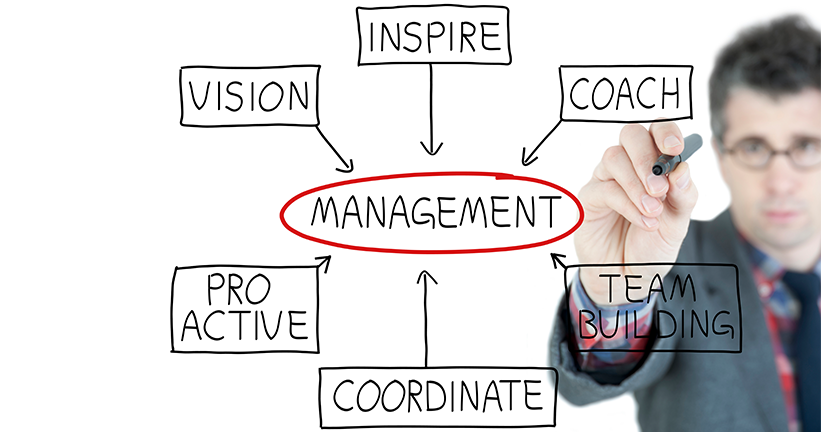
FDIC-Insured - Backed by the full faith and credit of the U.S. Government

FDIC-Insured - Backed by the full faith and credit of the U.S. Government
 VIEW ALL EDUCATION & INSIGHTS
VIEW ALL EDUCATION & INSIGHTS
August 11, 2020
Motivating and Managing Employees

Unless your business consists only of yourself, those that work for you and with you play a critical part in determining the success of your business and the level of satisfaction you get from managing the business. Managing employees and the entire employment process likely takes a considerable portion of your time and resources.
Granted, hiring the right individuals for specific jobs is very important, as is terminating employees. But, the middle part of the process – managing existing employees – is usually more time consuming and just as important. Here are some ideas that may help.
Make sure employees know what is expected
It can be frustrating for both the worker and the supervisor if there isn’t a common understanding of what the worker is supposed to do. Defining a position with a job description will provide guidelines for the hiring process and help ensure that the person hired has the right skills for the job. For the employee, a job description can relieve anxiety and give him or her a better sense of how the duties are part of the larger picture.
Along with employees knowing what tasks they should be performing, they need to know how much they should be accomplishing on a daily, weekly or longer basis. Establishing reasonable productivity expectations encourage workers to meet those expectations.
What motivates employees?
Abraham Maslow, a noted industrial psychologist quoted in many business management books, suggested that motivation could be centered on a “hierarchy of needs.” People first need to satisfy their physical needs – hunger, thirst, shelter and safety. Once those needs are met, getting recognition from others and enhancing one’s self-esteem become more important.
In a business setting, these needs can be addressed in many ways. A safe, clean and pleasant work environment along with reasonable compensation address the first level needs. Providing recognition for a job well done can take several forms. Verbal or written compliments for short-term performance and promotions (or merit raises) for longer-term performance give employees evidence that their efforts are appreciated.
Another practice that is common in larger employee groups is some form of “employee of the month” recognition. A plaque or special parking spot for these employees can mean a great deal. The additional benefit of this approach is that other workers see it and are often driven to get that same recognition.
Employees’ self-esteem is generally how they feel about themselves. Most people want to feel that their efforts are both appreciated and worthwhile. They want to feel that what they are doing makes a positive difference for themselves and their company. Involving employees in various decision-making activities demonstrates that the company values their work and ideas. If their ideas are implemented, and if those ideas generate success, the feeling of satisfaction will make employees feel better about themselves.
Evaluating employees
Evaluating employees is an important part of management. Let people know what they are doing well and what they are doing that needs improvement. Not providing this day-to-day feedback can create a non-productive environment and frustrations for employees and supervisors.
Having a more formal (and longer-term) evaluation process gives you the opportunity to see how the employee is growing in the job and then become the basis for decisions on compensation and promotions. Combining short-term and long-term evaluations should result in fewer surprises.
Rewarding employees
Monetary compensation is important. An employee’s wages must be competitive and yet reflective of the value they are providing to the business. Employee benefits are also critical. The right combination of a retirement plan, various insurance benefits and other perks can be the basis of a total compensation program.
There are also other ways to provide rewards in a less structured and perhaps less expensive manner. Consider the following:
- Give employees some flexibility in scheduling. Depending on your business, offering flexible hours or letting employees trade hours with others can let them deal with personal needs they may have.
- Share the perks of the business. Sharing tickets to a sporting event or just a holiday basket of fruit from a vendor helps employees feel that they are part of the company.
- Do something fun. Encourage a team to participate in a charity walk or buy admission to an amusement park.
- Feed employees. Sandwiches or pizzas occasionally help to foster a feeling of teamwork and they encourage positive discussions between employees about what is happening at work. There may even be a good idea that surfaces in those discussions.
Summary
Motivation can take many forms. The physical, monetary and emotional incentives that a company provides should serve to respond to the wants and needs of the company and the employees. Examine what you want employees to accomplish. Try to hire the right people and then make sure your motivational practices address what is important to your employees.








 Views
Views



 Go Back
Go Back











